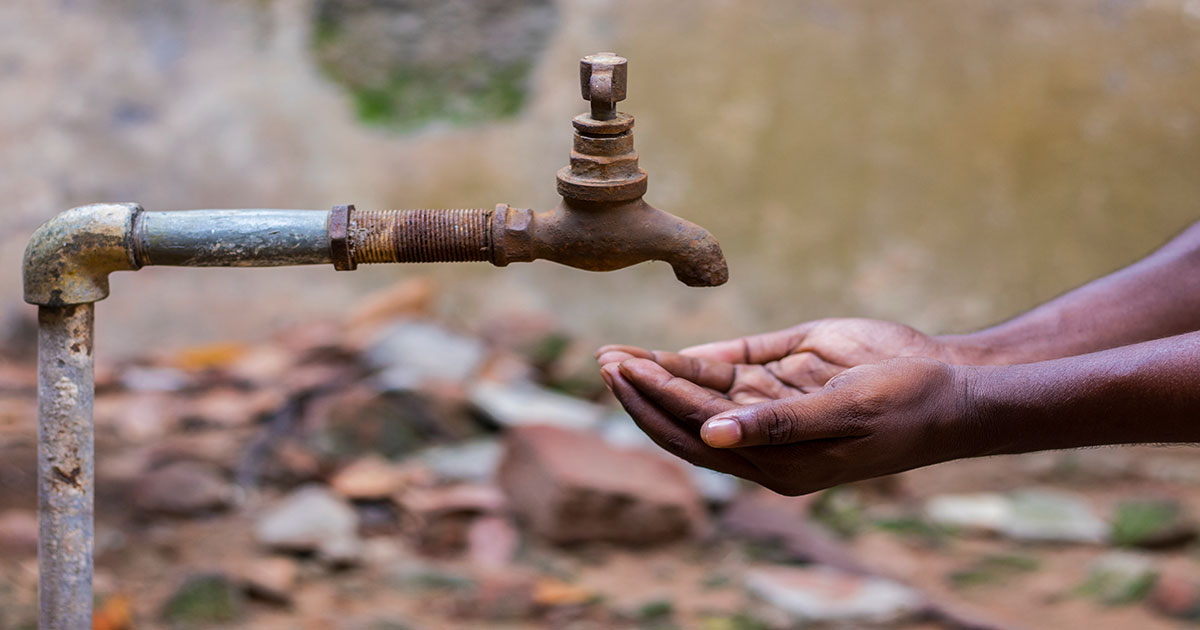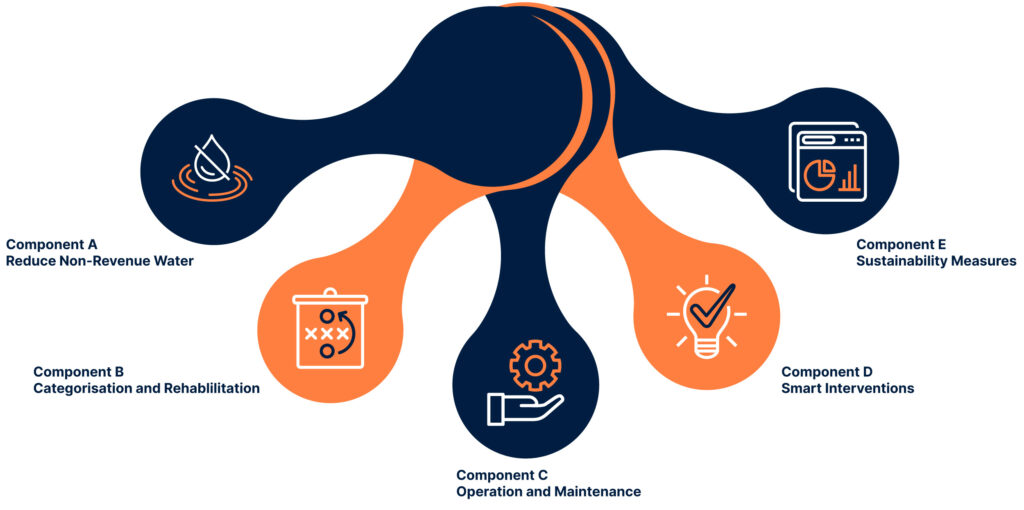
India demographics in a global context
In 2019, India launched Jal Jeevan Mission, with the aim to provide a Functional Household Tap Connection (FHTC) to every rural household by 2024. The aspiration of the community is to have piped water supply within their household premises, improving ‘ease of living’. The assured availability of drinking water will improve the health and socio-economic condition of rural populations and reduce the burden of water collection, which often falls on women and girls.
An increasing population, irregular rainfall patterns and depletion of ground water, are just some of the challenges related to scarcity of water. These challenges are often exacerbated by over extraction, low storage capacity, climate change, inadequate maintenance of water supply systems, and presence of contaminants.

Challenges of water supply infrastructure in India
A smart solution for India’s water challenges
The Smart Water Village concept is based on the underlying principle that we can readily deploy smart technology to gather data, an effective framework in the implementation of a more functional water supply system. The proposed pilot study will centre on the community of Kudha Keshavpur in Ayodhya, Uttar Pradesh which is home to 8,726 residents.
The aim of the Smart Water Village concept is to demonstrate Proof-of-Value in monitoring and detecting leakage from the water distribution network using Smart technology. The project will integrate digital technology across the water value chain to form better system-level decisions and improve operations management, maintenance, capital planning, and customer service.

Three pillar strategy – Smart Water Village
To achieve the three strategic pillars, Resilience, Efficiency and Quality, the team has identified five key enablers:
Anticipated Outcomes
This sustainable operational framework will establish an end-to-end water network ecosystem from water supply to asset management. The Smart Water Village identifies a viable model for the future governance and development of water supply infrastructure within the rural context of India.
As part of the pilot study SMEC has proposed the integration of IoT sensors and smart water technology throughout the existing water network(s). A consolidated GIS based Assets Management Database would be developed to inform operational decisions and maintenance. SCADA systems have also been proposed to automate and streamline processes.
Leveraging readily available technology the proposed concept showcases the ability of rural communities to adapt to smart interventions which deliver more sustainable outcomes.

 Infrastructure development in heritage settings: Lessons from Zanzibar
Infrastructure development in heritage settings: Lessons from Zanzibar
SMEC has been appointed to lead the engineering design to upgrade over 100 kilometres of urban roads in Zanzibar, a semi-autonomous region of the United Republic of Tanzania.
 Designing Tomorrow's Infrastructure Today: Circular Economy and BIM Collaboration
Designing Tomorrow's Infrastructure Today: Circular Economy and BIM Collaboration
The construction industry plays a considerable role in global energy consumption and energy-related carbon emissions, attributed to the manufacture of building materials and products. The current, linear ‘take-make-dispose’ model of resource consumption has led to environmental degradation and resource depletion.
 Global Hydropower Day
Global Hydropower Day
Hydropower is a cornerstone of sustainable energy solutions. It promotes environmental responsibility, economic stability, and energy reliability as the world continues to shift towards a sustainable and environmentally responsible future.






